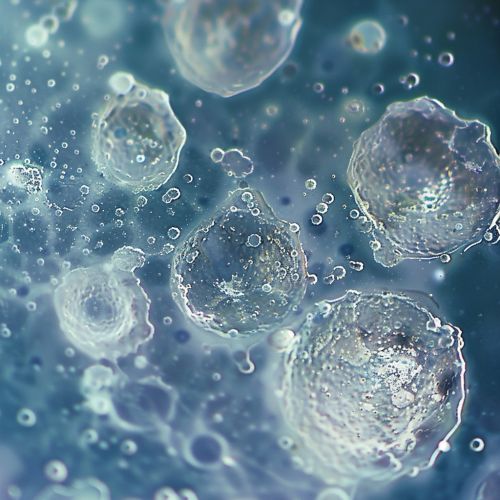Steroidogenesis
Overview
Steroidogenesis is the biological process by which steroids are generated from cholesterol and transformed into other steroids. The pathways of steroidogenesis differ among species, but all involve the synthesis of lipids, specifically steroid hormones. Steroidogenesis is a key aspect of endocrinology, as these hormones play a fundamental role in body functions such as metabolism, immune response, and the regulation of inflammation, blood pressure, and growth.


Biochemical Pathways
The process of steroidogenesis involves multiple biochemical pathways that occur in specific cellular locations. The initial steps take place in the mitochondria of the cell, where cholesterol is converted into pregnenolone through the action of the enzyme Cytochrome P450scc. This is followed by a series of enzymatic reactions that lead to the production of various steroid hormones.
Mitochondrial Pathway
In the mitochondria, cholesterol is transported into the inner mitochondrial membrane by the Steroidogenic Acute Regulatory (StAR) protein. Here, the enzyme Cytochrome P450scc cleaves the side chain of cholesterol, resulting in the formation of pregnenolone.
Smooth Endoplasmic Reticulum Pathway
The smooth endoplasmic reticulum (SER) is the site of further steroid hormone production. Pregnenolone is converted into progesterone by the enzyme 3β-Hydroxysteroid Dehydrogenase (3β-HSD). Progesterone is then converted into various other steroid hormones, including cortisol, aldosterone, and androgens.
Steroid Hormones
Steroid hormones are derived from cholesterol and are characterized by their four-ring structure. They include glucocorticoids, mineralocorticoids, androgens, estrogens, and progestogens.
Glucocorticoids
Glucocorticoids, such as cortisol, are produced in the adrenal cortex. They play a vital role in glucose metabolism, immune response, and stress response.
Mineralocorticoids
Mineralocorticoids, such as aldosterone, are also produced in the adrenal cortex. They are involved in the regulation of blood pressure and electrolyte balance.
Androgens
Androgens, including testosterone, are primarily produced in the testes and adrenal glands. They are responsible for the development of male secondary sexual characteristics.
Estrogens
Estrogens, such as estradiol, are primarily produced in the ovaries. They are responsible for the development of female secondary sexual characteristics and the regulation of the menstrual cycle.
Progestogens
Progestogens, such as progesterone, are produced in the ovaries and adrenal glands. They play a crucial role in the menstrual cycle and pregnancy.
Regulation of Steroidogenesis
The regulation of steroidogenesis is complex and involves multiple levels of control. The hypothalamic-pituitary-adrenal (HPA) axis plays a central role in this regulation. The hypothalamus releases Corticotropin-Releasing Hormone (CRH), which stimulates the pituitary gland to release Adrenocorticotropic Hormone (ACTH). ACTH then stimulates the adrenal cortex to produce cortisol. This is an example of a negative feedback loop, as high levels of cortisol inhibit the release of CRH and ACTH.
Clinical Significance
Abnormalities in steroidogenesis can lead to a variety of disorders. For example, Congenital Adrenal Hyperplasia (CAH) is a group of inherited disorders characterized by impaired cortisol production, leading to an overproduction of androgens. Other conditions, such as Cushing's syndrome and Addison's disease, are caused by overproduction and underproduction of cortisol, respectively.
